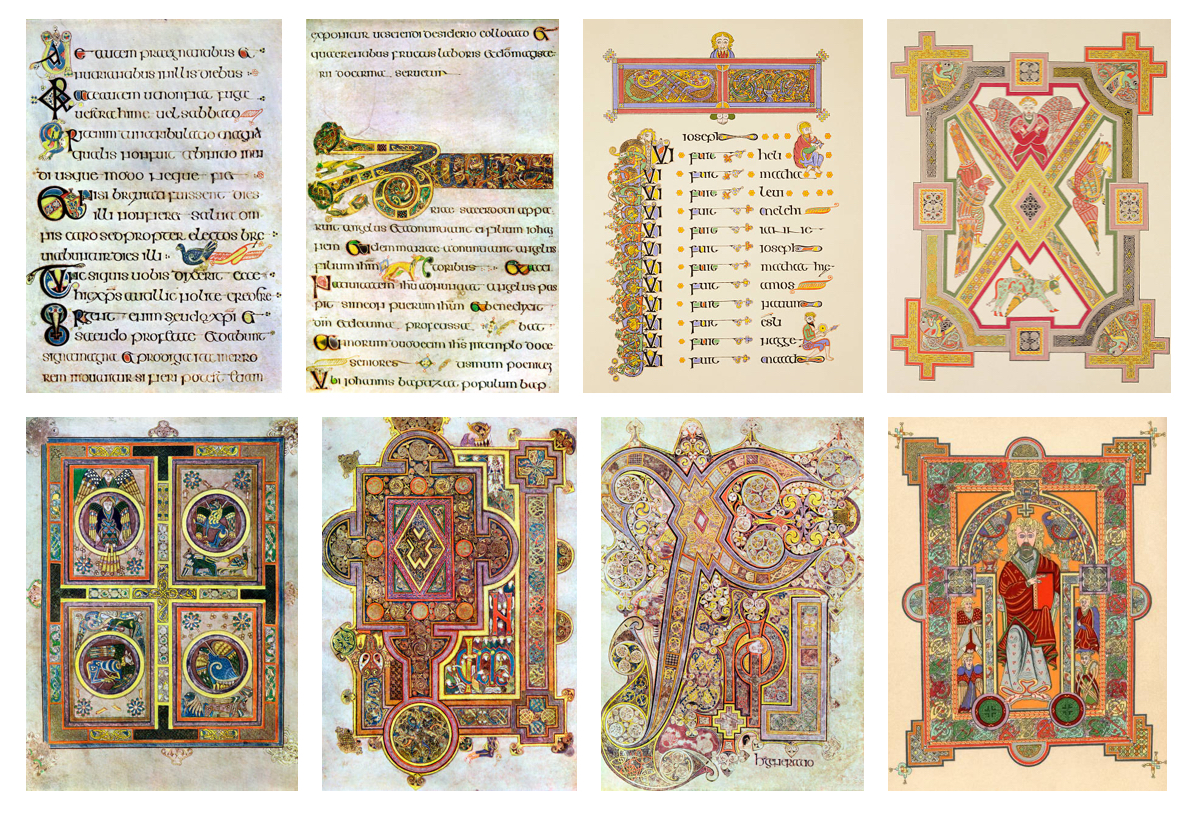Around the world, there are many kinds of important artistic practices that have led to large cultural impacts. In this post, I am going to go over the history of Celtic art and its significance on the modern world.
Who are the Celtic People?
The ancient Celtic tribes of the Iron Age are no longer in existence in their original form. However, descendants of Celtic peoples continue to inhabit various regions of Europe today. It’s essential to understand that “Celtic” refers to a cultural and linguistic group. They are not a single, unified ethnic entity.
Modern Celtic cultures and languages are still very much alive. For example:
- Ireland: The Irish people continue to embrace their Celtic heritage. With the Irish language (Gaeilge) being taught and spoken in parts of the country.
- Scotland: Scotland has a strong Celtic influence. This is with Scottish Gaelic spoken in some areas, especially in the Highlands and Western Isles.
- Wales: Welsh (Cymraeg) is a living Celtic language spoken in Wales.
- Brittany: In France, Brittany (Bretagne) has a distinct Celtic culture, and the Breton language (Brezhoneg) is still spoken.
- Cornwall: Cornwall in England has a Celtic heritage, and the Cornish language (Kernowek) is experiencing a revival.
- Isle of Man: The Isle of Man has its own Celtic language, Manx Gaelic (Gaelg), which is being promoted and taught.
So, while the original Celtic tribes of antiquity no longer exist, their cultural and linguistic legacy persists.
Celtic Art’s Origins
This art style begin to develop around 1200 BC during the European Iron Age. It is primarily in regions inhabited by Celtic-speaking peoples.
Celtic societies have strong oral traditions, which often incorporated storytelling, mythology, and symbolism. These elements are reflected in their art, as motifs and designs carried cultural and spiritual significance.
Early Medieval Period (5th-9th Century AD):
Celtic art is influenced by earlier artistic traditions, such as the Hallstatt culture (circa 800-450 BC) and the La Tène culture (circa 450 BC-1 AD). These cultures provide foundational artistic elements that would become characteristic of Celtic art. For example, intricate metalwork and decorative motifs.
Other notable cultures that influence their artwork during this time would be the Greek and Roman cultures.
The Early Modern Period (10th-18th Centuries)
Whereas with the Book of Kells there was a surge of Celtic art being displayed, Christianity culture quickly overpowers the artwork of the Celts.
Often referred to as the “Early Modern Period,” Celtic work sees a transition from the intricate and distinctive styles of earlier Celtic art. Then, there is a period influenced by Christianity, medieval European art, and regional developments.
Christian Art
During this time there is the spread of Christianity across Celtic regions. This is including Ireland, Scotland, and Wales. Celtic art begins to incorporate Christian themes. First, this led to the creation of religious art, such as illuminated manuscripts, crucifixes, and religious paintings.
One of the most important documented pieces of Celtic Art is The Book of Kells. The Book of Kells is an illuminated manuscript gospel book that dates back to the 9th century.
It is considered one of the most famous and beautifully illuminated manuscripts in the world. The Book of Kells is an important example of medieval Celtic art. Also, it is currently housed in the Trinity College Library in Dublin, Ireland. The Book contains the four Gospels of the New Testament, along with various other texts and illustrations.
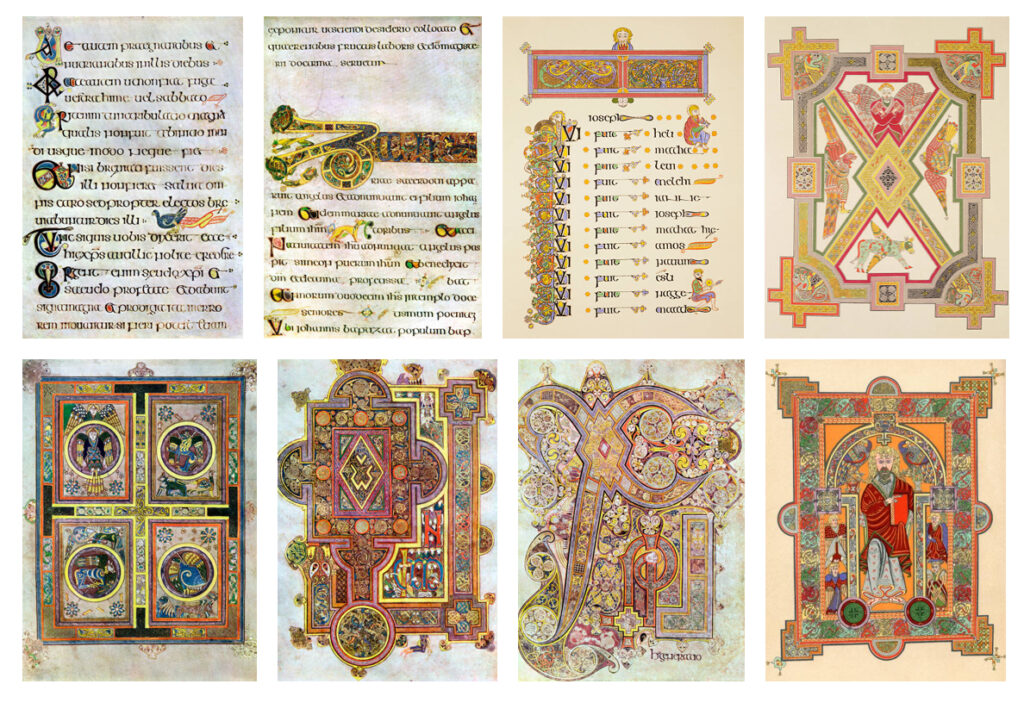
Regional Differences: Ireland and Scotland
Ireland and the Insular Style
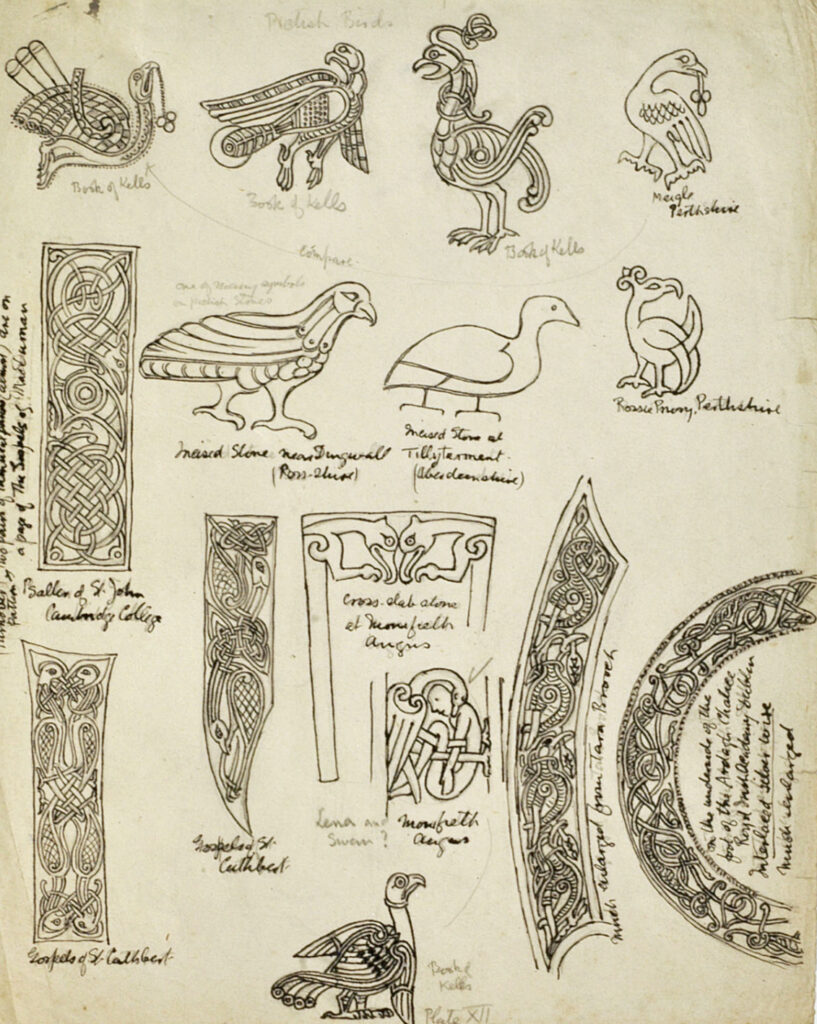
The Insular style, is also known as the Hiberno-Saxon or Irish style. It is characterized by intricate and densely decorated manuscripts and metalwork. Often, it features interlace patterns, zoomorphic motifs (animal forms), spirals, and intricate knotwork.
While rooted in Celtic tradition, the Insular style absorbs influences from Irish, Roman, and Eastern Christian art. It incorporates Christian themes and motifs, such as biblical scenes and religious symbols.
Scotland and the Pictish Style
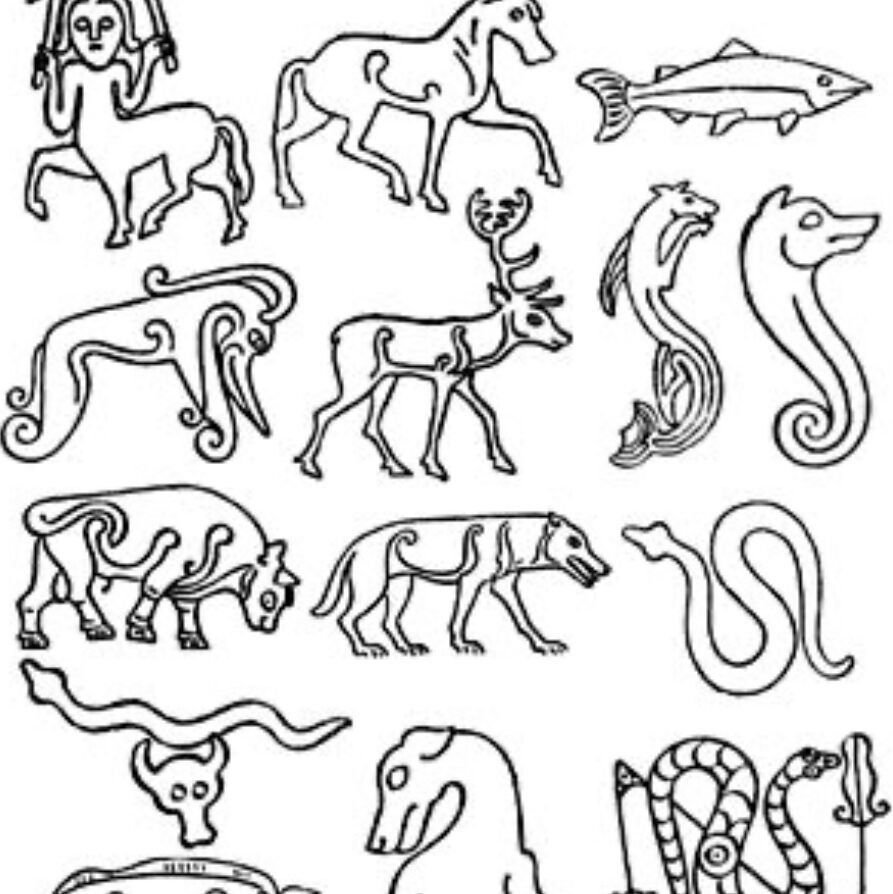
The Pictish style is known for its unique symbol stones, often large, flat stones with intricate carvings. Pictish symbols include abstract designs, animals, and mythical creatures. Also, unlike the Insular style, Pictish art lacks the elaborate interlace patterns.
Pictish symbol stones are said to have some religious or ceremonial significance. However, much of the Pictish art appears to have had a secular context. Some stones are potentially marking territorial boundaries or commemorating individuals.
Main Trademarks and Focuses of Celtic Art
Celtic Crosses
Celtic crosses are also referred to as high crosses. Many believe their roots to be in Ireland. These crosses represent the fusion of Celtic pagan symbolism and Christian religious beliefs.
The High Crosses at Monasterboice in Ireland or Iona Abbey in Scotland are popular tourist attractions.
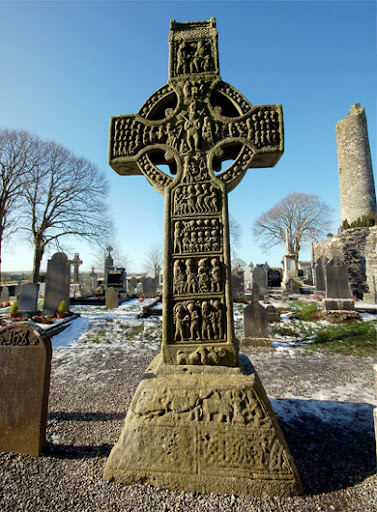
- Symbolism:
- Cross: The cross itself symbolizes the Christian faith and the crucifixion of Jesus Christ.
- Circle: The circle can represent the unending love of God. Also, the eternal nature of the soul, or the cycles of life and nature.
- Knotwork: Knotwork patterns symbolize the interconnectedness of all life. As well as spiritual growth and transformation.
- Preservation:
- Many ancient Celtic crosses have endured for centuries, standing as historical and religious monuments. They are often found in churchyards, monastic sites, and cemeteries.
- Modern Interpretations:
- Celtic crosses continue to be popular in modern jewelry and art. Both within Celtic regions and worldwide. They are cherished for their beauty and spiritual symbolism.
Tree of Life
In Celtic mythology, specific trees such as the oak, yew, and ash were believed to have spiritual significance. Also, they are often associated with sacred groves. The Tree of Life concept draws from these beliefs.
The Tree of Life in Celtic art is a symbol represented as a tree with branches and roots that interweave. This is similar to the other Celtic artforms, often forming a circle or knotwork pattern. It is a prominent motif in Celtic mythology and artwork.
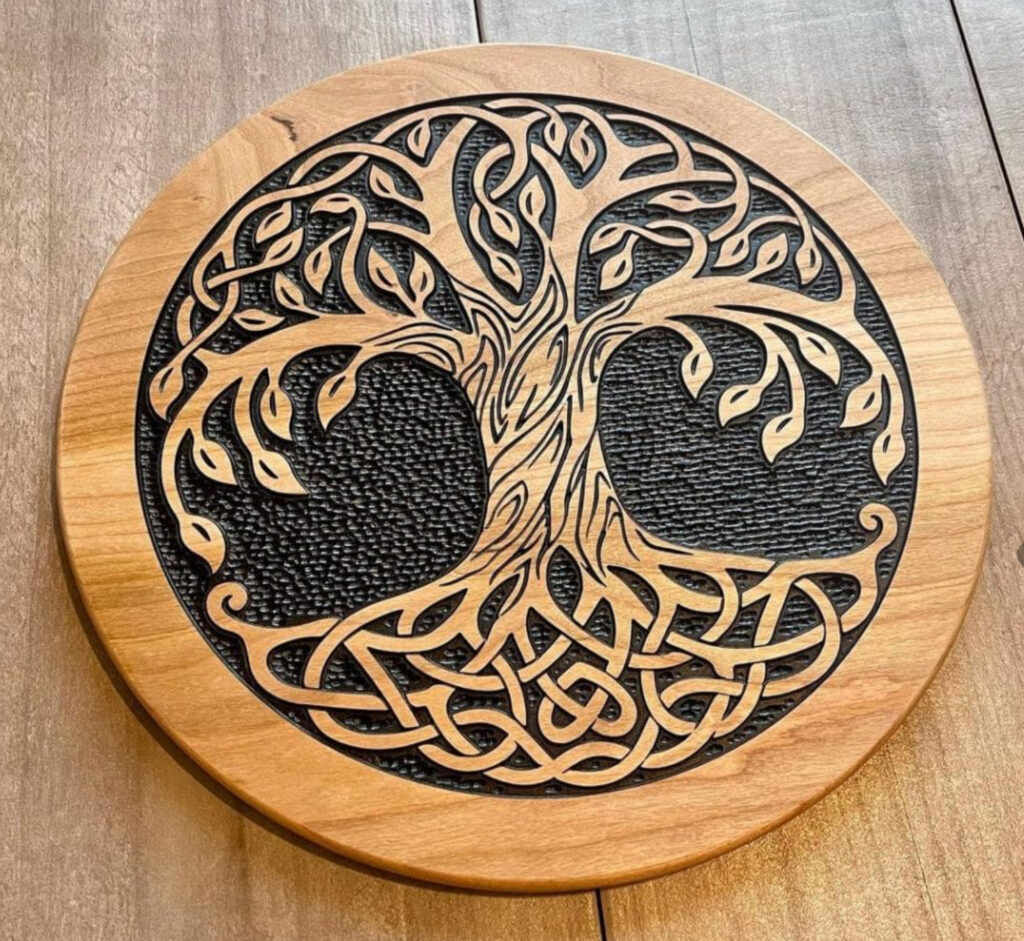
- Interconnectedness: The most central symbolism of the Tree of Life is its representation of the interconnectedness of all life. Branches and roots of the tree intertwine. This is symbolizing the interconnected relationships between the physical and spiritual realms. Also, the interconnectedness of all living beings.
- Spiritual Growth: The tree’s upward-reaching branches signify spiritual growth, aspiration, and enlightenment. It embodies the idea of striving for higher knowledge and wisdom.
- Cultural Heritage: In Celtic culture, the tree held a special place as a source of sustenance and shelter. It is making it a symbol of the sacredness of nature and the land.
Celtic Knots
Celtic knots have their roots in ancient Celtic and Druidic traditions, dating back over 1,500 years. Celtic knots are characterized by a continuous, unbroken pattern of lines. These will weave in and out, often without a discernible starting or ending point.
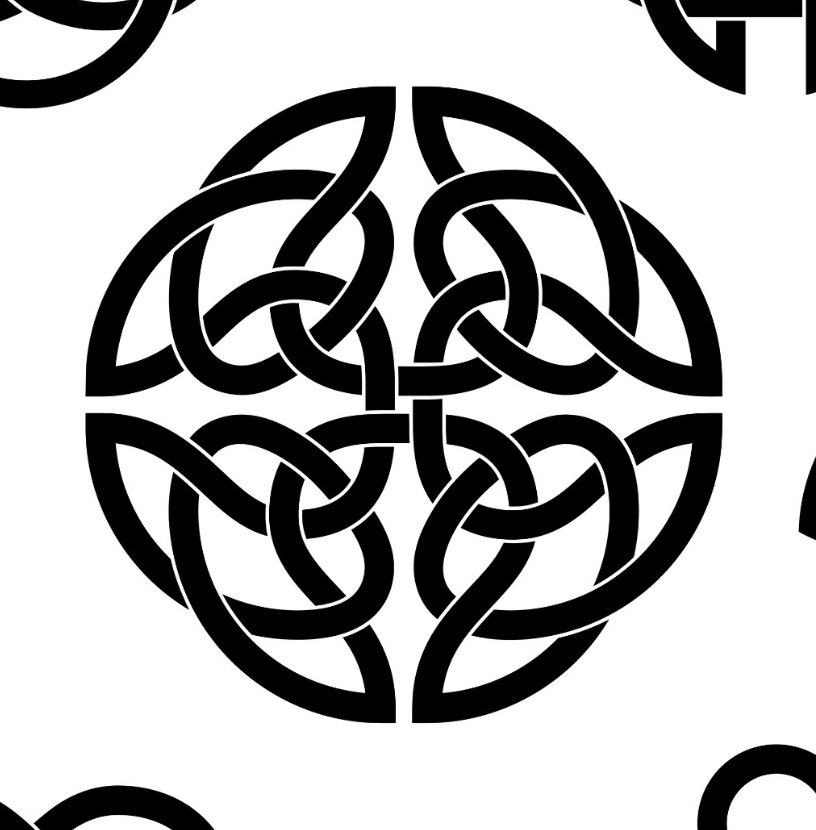
- Eternity: One of the primary symbols associated with Celtic knots is eternity. The endless loops and unbroken lines signify the timeless and infinite nature of life and love.
- Protection: Some Celtic knots were believed to have protective properties, guarding against negative energy or spirits.
- Interconnectedness: The interwoven patterns represent the interconnectedness of all things—nature, life, and the spiritual realm.
- Spirituality: In a spiritual context, these knots are associated with the cycles of life, death, and rebirth.
Shamrock
St. Patrick, the patron saint of Ireland, is often associated with the shamrock. Legend has it that he used the three-leafed shamrock to explain the Holy Trinity to the pagan Celts. The Holy Trinity consists of the Father, the Son, and the Holy Spirit.
Each leaf of the shamrock is said to represent one of the divine persons while the whole plant signifies their unity. It is common for a shamrock to have three leaves on it. However, it is considered very good luck to find one with four.

- Emerald Isle: Ireland is often referred to as the “Emerald Isle” due to its lush green landscapes, and the shamrock is seen as a symbol of Ireland’s natural beauty.
- Artistic Inspiration: Celtic artists have incorporated shamrock motifs into various forms of art, including jewelry, clothing, and decorative objects.
- Protection: The shamrock has been regarded as a protective symbol. It was worn to ward off evil spirits and bad luck in ancient Celtic traditions.
- Nature: similar to that of other Celtic practices, there was important emphasis on preservation of the earth around you and understanding the balance of the world.
Claddagh Ring
A Claddagh ring is a traditional Irish ring featuring three key elements: a heart, a pair of hands, and a crown. These elements are often depicted within a circular design. Similar to knots and crosses, the Celts symbolize eternity with this never ending pattern.
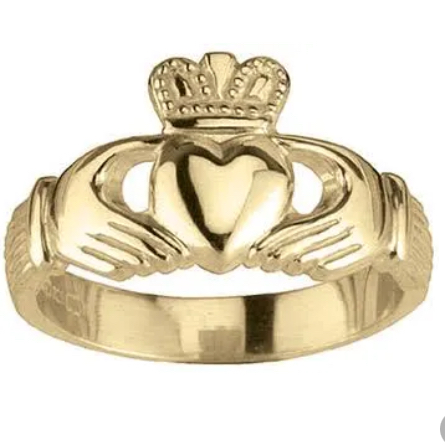
- The Claddagh ring has a long history dating back to the 17th century in the fishing village of Claddagh near Galway, Ireland.
- Legend has it that Richard Joyce, a native of Claddagh, created the first Claddagh ring while he was enslaved. Upon his release, he returned to Claddagh and gave the ring to his beloved as a symbol of their enduring love.
The Claddagh ring is known for its motto, “With my hands I give you my heart, and crown it with my loyalty.” This motto encapsulates the key sentiments of the ring: love, friendship, and loyalty.
- The Claddagh ring is often used as an engagement or wedding ring. Also, it is symbolizing the commitment and union of two people in love, friendship, and loyalty.
- It can also be worn as a symbol of Irish identity and pride. In connecting individuals to their Celtic heritage.
- The way the ring is worn carries significance:
- On the Right Hand with the Heart Facing Out: Indicates the wearer is single and open to a relationship.
- With the Right Hand with the Heart Facing In: Symbolizes that the wearer is in a relationship.
- On the Left Hand with the Heart Facing In: Typically worn by those who are married or engaged.

